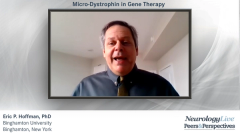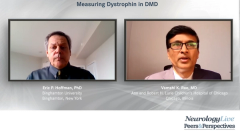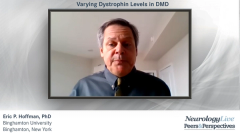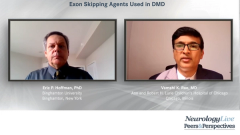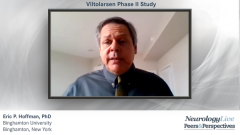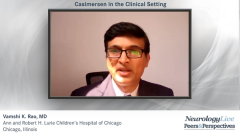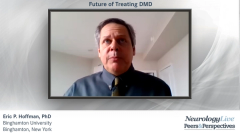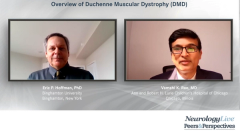
Micro-Dystrophin in Gene Therapy
Discussion of micro-dystrophin, its place in gene therapy, and relevance in the clinical setting in relation to Duchenne muscular dystrophy.
Episodes in this series

Vamshi K. Rao, MD: Let’s talk about this truncated form of dystrophin, called micro-dystrophin. What do you think about micro-dystrophin in general? How is it relevant in today’s world as we think about dystrophin clinical trials and potential future therapies?
Eric P. Hoffman, PhD: Because the dystrophin gene is so large, a goal is to put the gene back into a patient. That’s often done by gene therapy. That’s working very well for particularly eye disorders and some blood disorders, but the key to gene therapy and giving the normal gene back is being able to fit the gene inside a viral vector. The DMD gene, the dystrophin gene, is so much bigger than any virus can handle, so there’s been a lot of work to make variants of the gene and variants of the dystrophin protein coded by the variant gene that retains enough of the function of full-length dystrophin to recover the muscle enough.
The current gene therapy trials are using a dystrophin protein that’s only about 30% of the size of the normal dystrophin protein. Scientists have tried to retain the most important parts of dystrophin. There aren’t many proteins that you can cut out 60% of and it still retains function, but it seems possible with dystrophin to at least some extent. The way to visualize it is like a tinker toy or an erector set, where you have the bars and connectors. Dystrophin is a structural support to the myofiber and needs connectors at the end. What scientists have done with gene therapy vectors is truncate much of the rod part but keep the connectors so that the tinker toy or erector set still functions by connecting, but it’s shorter. It’s clearly not normal dystrophin. Nobody should expect this dystrophin, at 30% of its size of the normal protein, to retain 100% of function.
Vamshi K. Rao, MD: I like your analogy about the tinker toy. It gives you a nice visual.
Eric P. Hoffman, PhD: Although tinker toys tend to date 1.
Vamshi K. Rao, MD: I think the goal here, as we’re thinking about micro-dystrophin and dystrophin, is to at least make some protein so that we are moving beyond no protein or a very small amount of protein that is connected with a Duchenne phenotype. We are trying to ameliorate the phenotype and make it into a Becker muscular dystrophy phenotype, which should inherently improve life span and other organ system functions that are usually the progressive nature of Duchenne.
Eric P. Hoffman, PhD: You bring up a good point of Becker muscular dystrophy, which is a milder variant of Duchenne that also has mutations within the same DMD gene. Those patients are nature’s experiment of making semifunctional dystrophins that are missing big chunks of the amino acid sequence. Some patients with Becker muscular dystrophy have been found to be missing half the gene, yet they can be ambulatory into their 60s; whereas a patient with Duchenne muscular dystrophy typically loses ambulation at 11 or 12 years of age. Nature has already done, through clinical medicine and these patients, a series of structure function relationships of what parts of the protein seem to be most important. As you said, the goal is to find something that fits in a viral vector and still retains enough of the protein function. One of the advantages of the viral vectors is they can hypothetically make lots of the protein, but gene therapy in Duchenne is challenging because muscle is 30% of your body mass. It’s much different from successful gene therapy already in clinical utilization of an intraocular injection to deliver the retina cells, or in blood cells where you can take out stem cells, put in the gene, and put them back so they populate the bone marrow. That’s straightforward, but if you talk about in situ or in vivo delivering to a tissue that’s the largest organ system of your body, that’s a technical challenge as well.
Vamshi K. Rao, MD: That is a great point about the limitations as we’re learning about not just the technology involved in gene therapy, but the ultimate goal of improving the phenotype. As you said, it’s 30% of the body.
I thank all of you for watching this Neurology Live® Peers & Perspectives®. If you have enjoyed the content, please subscribe to our newsletters to receive upcoming programs and other great content in your in-box. Thank you.
Transcript Edited for Clarity
Newsletter
Keep your finger on the pulse of neurology—subscribe to NeurologyLive for expert interviews, new data, and breakthrough treatment updates.

